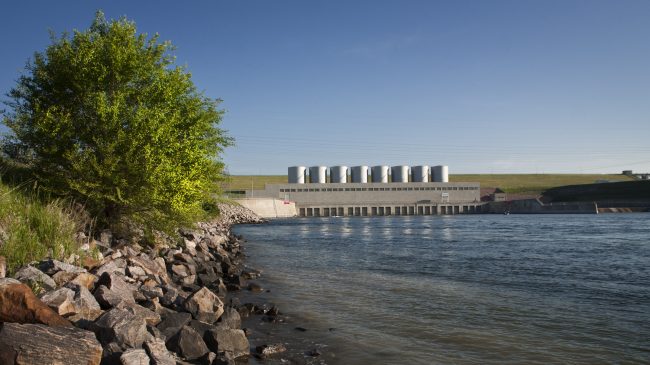On Dec. 5, the House Transportation and Infrastructure Committee’s Subcommittee on Water Resources and Environment held the first in a series of hearings to discuss the upcoming reauthorization of the Water Resources Development Act (WRDA). The first hearing focused on the needs of the U.S. Army Corps of Engineers (USACE), one of the agencies tasked with maintaining America’s water resources, but lacked substantive talks of reform.
While the opening discussions were relevant to WRDA, future hearings ought to capitalize on the opportunity for reform and how to best address persistent issues that have arisen during the Corps’ stewardship of U.S. water resources.
Past Water Resources Development Acts were mentioned throughout the hearing, focusing on how the biennial legislation can help or hinder the Army Corps’ mission. For example, WRDA 2020’s provision allowing greater expenditures from the Harbor Maintenance Trust Fund was viewed as a good change, as I’ve written. These introductory discussions are common in initial hearings for a bill as massive as a reauthorization bill like WRDA.
Some questions also focused on the challenges faced by the U.S. Army Corps of Engineers when working on and prioritizing navigation projects throughout the country. Lt. General Scott Spellmon, commanding general and chief of engineers for USACE, noted that there are only 19 hopper dredgers (four operated by the Corps) in the U.S. fleet and 577 federal navigation channels across the country. Spellmon lamented scheduling problems with the dredging industry. Compare the situation with Europe: The four largest European dredging companies own upwards of 80 hopper dredgers. Given the limited dredging capacity the U.S. has, Spellmon said the Corps plans to focus on high-performance channels, i.e., those that carry the most freight.
These capacity concerns have become more serious recently, especially given the drought-driven low water levels in the Mississippi River during the past two years, which has required constant dredging by USACE to keep the river navigable. Because there are few permanent solutions aside from emptying spillways and sustaining dredging throughout the season, it should be a top priority for the Corps to look for ways to expand dredging availability in the U.S., especially in times of low draft.
But any capacity constraints are artificial. International firms offer a cheaper and more financially sustainable way for the U.S. to undertake its future, increased dredging needs. Europe has much larger dredgers than the U.S. fleet. The largest dredger (by capacity) in the U.S. fleet is the Ellis Island, with 11,468 cubic meters of hopper capacity. For comparison, Boskalis, a European dredging firm, ordered a 31,000 cubic meter hopper dredge earlier this year. Likewise, European dredgers operate at cheaper rates than U.S. dredgers.
But the Foreign Dredge Act of 1906, something I’ve also written about at length, prevents cheaper international dredgers from taking up contracts in the U.S. A waiver process in times of severe drought or crisis could help alleviate these capacity concerns and would likely face less of the political opposition full-scale repeal of the Foreign Dredge Act would incur.
But capacity is only one of the significant issues the Corps faces. The other, and a recurring mention during the hearing, is money.
Funding a civil works program like the one overseen by the Corps is an expensive endeavor. Locks, especially new commercially sized locks, are megaprojects in their own right. The existing dedicated fund that pays for a portion of these megaprojects is funded insufficiently by a gas tax and often takes multiple years to accumulate a sufficient balance to fund even a portion of major construction.
Financing is often a better path to delivering these major, costly projects. It’s hard to produce the needed funds up-front from general fund appropriations. In these situations, leveraging financing is essential. To address this persistent funding problem, Congress should look at authorizing more ways for the Corps to finance projects in the newest iteration of the Water Resources Development Act. And in a past WRDA, Congress did.
The 2014 WRDA authorized the creation of a public-private partnership (P3) pilot program under the oversight of the Corps. Since then, the project has not had very much non-federal interest, especially for large-scale projects like new lock construction or major rehabilitation projects. This isn’t due to any shortcomings from P3s but mainly due to the limitations of the pilot program itself.
The pilot program does not allow for direct private-sector participation. Per the U.S. Army Corps of Engineers public-private partnership pilot program webpage: “The private sector developer is generally selected via a competitive procurement process and will work under the authority of the non-federal sponsor.”
This effectively bars the private firms from coming to the Corps and proposing public-private partnerships themselves, known in the P3 world as unsolicited proposals—a proposal sent in without being solicited by the entity managing the P3. The Association for the Improvement of American Infrastructure put it best: “Leaving open the possibility to learn of creative project concepts can be a difference maker for stakeholders.”
The current approach limits the availability of private capital. While it is available at the direction of a local entity, full-scale private-sector participation ought to be enabled. Encouraging private investment in the country’s water resources could help alleviate capacity and funding issues. Ongoing megaprojects, like the Olmsted Locks and Dam on the Ohio River, have eaten up much of the available capital funding year-over-year. With project costs in the billions for the biggest lock rehabilitations and replacements, it seems unlikely that a state or municipal sponsor’s funding will be able to bridge the gap toward the financial delivery of these large-scale projects.
In upcoming Water Resources Development Act negotiations, Congress has plenty of opportunities to reform the U.S. Army Corps of Engineers and its funding mechanisms for the better.
Congress should look for ways to implement a waiver process for the Foreign Dredge Act of 1906. Cheaper, larger European dredgers could help alleviate capacity concerns and could be critical in keeping critical navigation channels like the Mississippi River open in times of drought.
As for new construction and refurbishment, the private sector’s capital remains largely untapped. The limited-scope public-private partnership program is sorely lacking on the private side and should be reformed and expanded.

